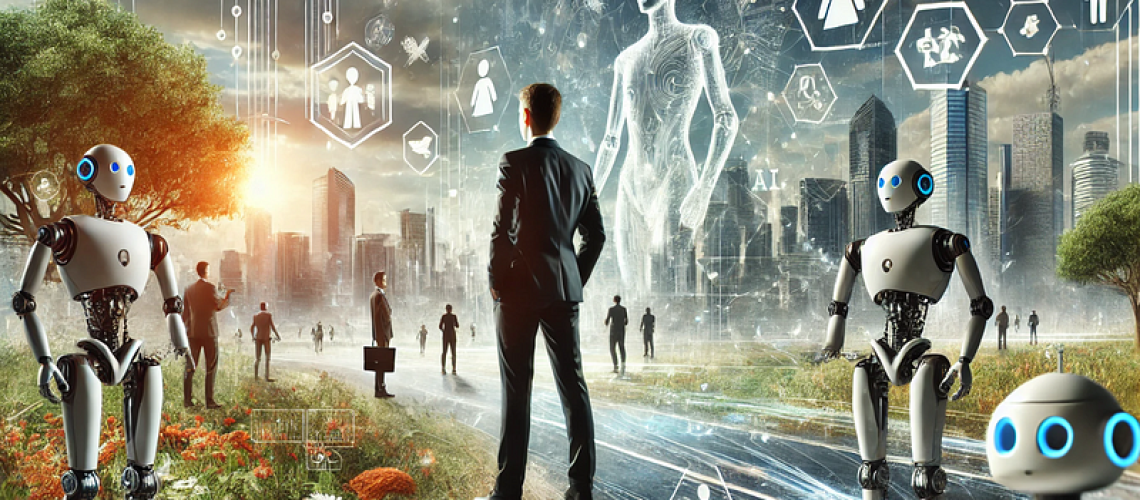“The best way to predict the future is to invent it.” — Alan Kay.
You plaster “digital transformation” on every slide. You hire consultants to draw roadmaps. You still cling to outdated org charts and annual budgets. You fear AI. You treat change like a storm to dodge instead of a wave to ride. Meanwhile, your competitors are already cruising past you on a surfboard.
1. Stepping Up to Lead in Uncertain Times
The digital era places unique demands on business leaders. Rather than being strictly profit-focused, many are expanding their roles to encompass a broader set of responsibilities. Businesses are interconnected within vast networks of employees, customers, investors, and society. Leaders today recognize the value of stability, unity, and truth — not just for growth but for building resilient organizations. Embracing these values openly, especially when they align with a business’s core mission, strengthens trust and resilience, even if it means navigating the occasional controversy.
2. Anticipating Trends and Embracing Technological Change
One key aspect of successful leaders is their ability to spot trends before they go mainstream. Instead of focusing on where things stand, they look at where the world is heading. This mindset encourages leaders to ask critical questions, analyze weak signals, and engage with others who have diverse insights. Leaders who adopt this forward-looking perspective can better position their businesses to respond to change, fostering growth and agility even in unpredictable times.
Take AI, for example. Some see it as disruptive, while others view it as a tool to boost productivity and help professionals work more intelligently. AI isn’t just about simplifying tasks — it redefines how work gets done. The future belongs to those who experiment, adapt, and creatively integrate these technologies.
3. Human + Machine: Building a Tech-Enhanced Workforce
One exciting prospect of AI is its potential to make us more human. Instead of thinking of technology as a competitor, many leaders advocate for a “human + machine” approach. By augmenting human capabilities, AI tools help professionals — from marketers and engineers to legal experts — focus on higher-level, strategic work rather than routine tasks. As these tools evolve, they’re transforming entire industries, creating opportunities for employees to upskill and take on more impactful roles.
AI may allow for leaner, more efficient teams, but that doesn’t necessarily mean job cuts. Instead, it calls for a shift in organized and delivered work. For example, a study by McKinsey found that marketing departments using AI saw a 15% increase in productivity, as they could focus more on creative strategy and customer engagement instead of routine tasks. These teams are evolving to integrate AI tools that elevate their competitive edge.
4. Preparing for the Future of AI and Human Collaboration
Fast-forward 10 to 15 years, and the tech landscape could look dramatically different. Advanced interfaces enable us to communicate with devices through natural language, shifting from typing to speaking. This shift will enhance productivity, with AI interpreting our intentions and acting based on voice commands and context. Imagine creating an entire report just by talking it through — AI will become the ultimate co-worker, supporting tasks across all professions.
However, this transformation comes with challenges. Leaders and society must address data privacy, AI biases, and potential job displacement. As more people engage with AI, they will learn to harness its creativity by refining their approach, encouraging it to produce innovative, out-of-the-box solutions.
5. Embracing a Tech-Enhanced Society
In a truly techno-humanist society, technology will amplify what’s best about humanity — creativity, compassion, and collective wisdom. The journey isn’t just about smarter tools but about fostering a world where AI helps solve real-world issues and enhances our quality of life. Whether it’s in healthcare, education, or workplace dynamics, the ultimate goal is for AI to be a force that supports human potential, driving a positive impact across industries and communities.
As technology and humanity grow closer, the focus will be on creating AI that complements, rather than competes with, the human experience. This future requires thoughtful leadership guided by values and a commitment to responsible innovation. With these principles, today’s leaders can steer their organizations through the waves of technological change, building a future that works for everyone.
🎯 Remember
You don’t get a medal for plans that sit on shelves. You earn respect by doing the freakin’ work. Start fighting for your future today.
- Successful leaders are expanding their focus beyond profits to include resilience, unity, and trust as core strategy elements.
- Forward-thinking leaders view AI as a tool for empowerment, fostering creativity and efficiency rather than fearing disruption.
- A tech-enhanced workforce, where humans and machines work in synergy, will create opportunities for growth and innovation, driving a positive impact across industries and communities.



